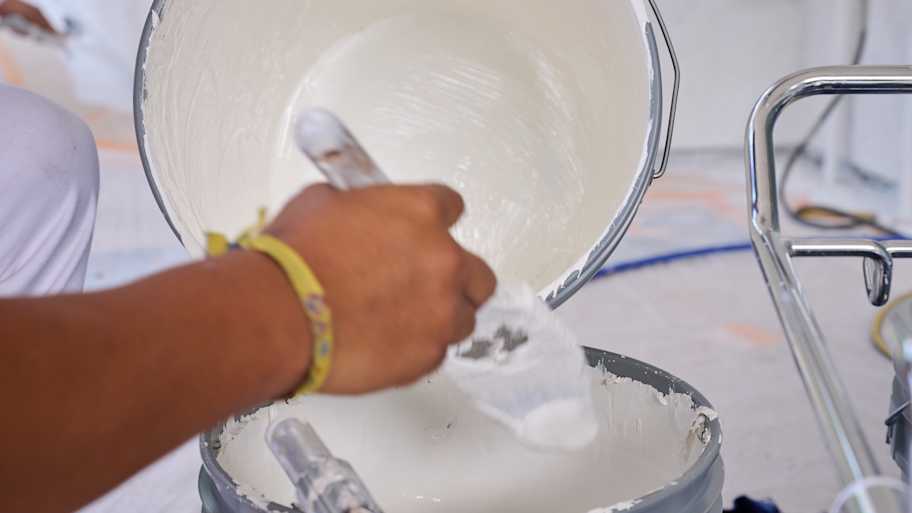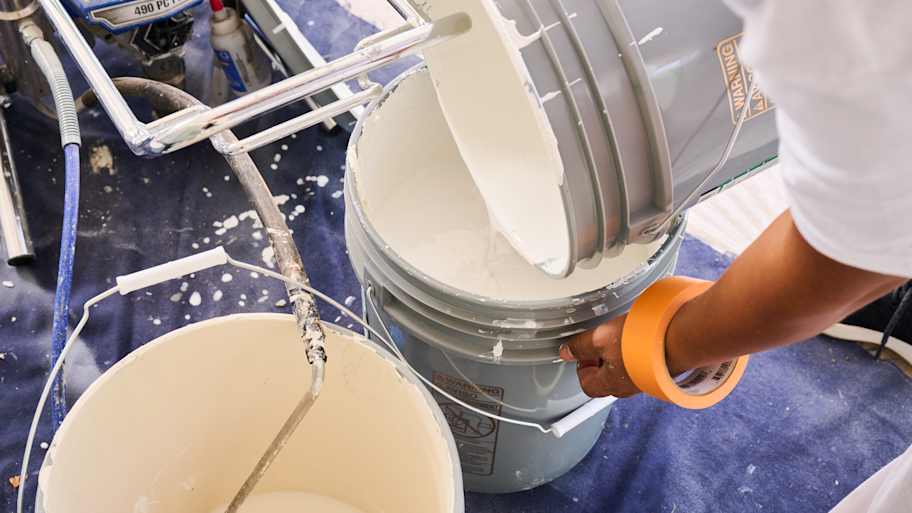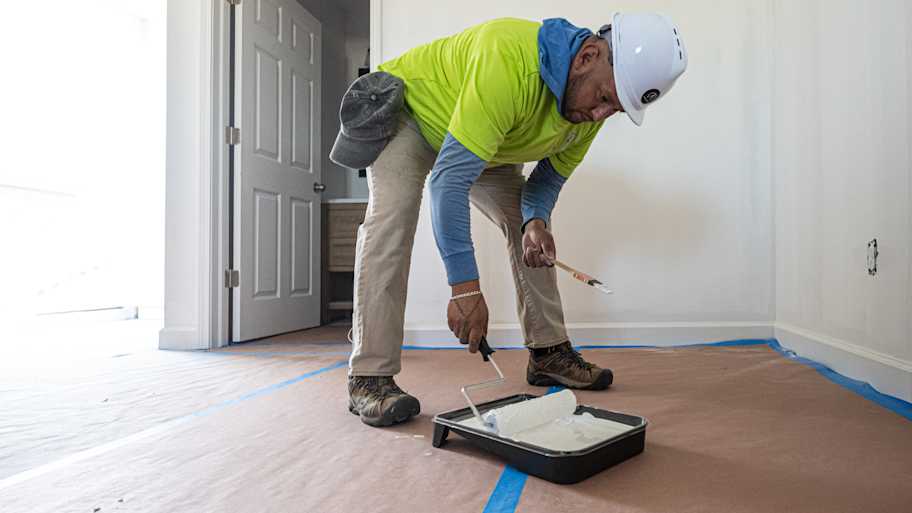How to Remove Paint From Metal in 6 Different Ways
Restoring metal to its original sheen is a DIY project anyone can tackle


Whether it's faded furniture or splattered door hinges reminding you of hasty paint jobs, you’re here because you need to know how to remove paint from metal. This project is relatively easy. However, depending on the item and type of paint, you may need to invest a lot of time and elbow grease into the job. This guide offers various metal paint removal methods you can try yourself.
Why Remove Paint From Metal?
If you're trying to restore a metal surface, simply painting over it isn't a lasting solution. Metal primers and enamel paints will only properly adhere after you’ve done thorough surface prep. Otherwise, your metal paint may lose its sheen quickly, and you’ll end up with a lackluster finish, literally.
Before you try to paint a metal surface, make sure it's spotless. That means removing all dirt, grease, rust, and old loose or peeling paint so your chosen new paint or primer can work as intended. This is where our suggested methods of removing paint from metal will come in handy.
Before Removing Paint From Metal Surfaces
Before you select a method and start gathering materials for stripping paint from metal, determine what type of paint you're dealing with. Specific methods are more effective on certain paint types.
You can easily remove oil paints, emulsion paints, and enamels using household tools and materials. However, hard paints like epoxy, latex, and acrylic are more difficult to remove. These substances may require the use of acidic or chemical solutions.
How to Remove Paint From Metal
Once you know what kind of paint you’re dealing with, you can choose the appropriate removal method. You may need a mechanical method, like using a scraper or grinder, or a chemical one, like a chemical paint stripper or acidic solution. If one method doesn’t work, try another until you find the right one—for safety’s sake, make sure the surface is free of solvents, strippers, or other chemicals before moving on to another method.
Removing Paint From Metal Using a Paint Scraper

If your metal surface is flat or the paint is already flaking off in spots, a handheld paint scraper is a simple manual way to remove the paint without chemicals. This method requires a fair bit of elbow grease and time. Simply maneuver the scraper tip under the paint and pry it off the metal.
Wide scraper blades work well on large surfaces, while narrow blades are ideal for hard-to-reach areas. Use a plastic blade instead of a metal one if you’re working with a softer metal, such as brass, to avoid scratching the surface.
Removing Paint from Metal with a Heat Gun
If a paint scraper alone won't get the paint off, loosen the paint with heat. Put on heat-resistant gloves if you’re trying this method.
Set the heat gun to its lowest setting.
Hold the heat gun a few inches from the metal surface.
Move the heat gun back and forth until the paint bubbles or pulls away from the metal.
Scrape off the paint gently with a paint scraper.
If the paint doesn't bubble, slowly increase the heat until it does. Just keep in mind that too much heat can warp the metal.
Removing Paint From Metal with a Power Angle Grinder

For large, strong pieces of painted metal, you can bring in the power tools. A handheld angle grinder with an attached strip disc can quickly remove paint.
However, too much grit can polish the surface and prevent you from effectively repainting the metal later. Wear safety goggles and start with a low-grit flap disc. Slowly ramp up the abrasiveness as needed until all the stubborn paint is history.
Removing Paint From Metal with a Chemical Paint Stripper
Chemical paint strippers from hardware stores are highly effective. However, they also create harmful fumes. Wear protective gear like a face mask, gloves, and eye protection, and work in a well-ventilated space away from potentially flammable items if you use a chemical paint stripper.
Pour the paint stripper into a container and apply it to your object with a brush.
Follow the instructions on the packaging and wait 30 minutes to overnight for the chemical to react to the paint and make it bubble.
Use a rag or paint scraper to remove the unwanted paint.
Repeat as necessary.
Related article: Limewash vs. Paint
Removing Paint From Metal with Baking Soda or Vinegar

Baking soda and vinegar are natural homemade cleaners that can remove paint on small pieces of metal like door hardware and tools. Create a solution using 1/4 cup of baking soda or vinegar for every quart of water.
Fill a large disposable pot with the water and baking soda or vinegar solution.
Bring the solution to a boil.
Add the metal items to the pot and boil them for 15 minutes or until you see the paint coming off.
Using heat-resistant gloves and tongs, remove the metal and put it on a heat-safe surface.
Scrape the remaining paint off with a paint scraper.
Removing Paint From Metal with an Abrasive Chemical or Acidic Solution
Try a chemical like ammonia or acetone if you're having trouble removing paint like epoxy. Wear thick gloves, a mask, and eye protection to keep these solutions off your skin and face. Apply a small amount to a rag and rub the metal surface vigorously to remove the paint.
Another option is to use nitric, hydrochloric, or phosphoric acid concentrations. These solutions react with painted metal and immediately evaporate the paint. Treat acid concentrations with extreme caution or avoid them completely if you don’t have the protective gear or are uncertain that you can keep yourself safe while using them. Take great care to keep acids off of clothes and skin.
Tips for Removing Paint From Metal
Follow these tips when you strip paint from metal using one of the methods above.
Avoid using coarse sandpaper or wire brushes, which can scratch and damage metal.
Use an old toothbrush to reach nooks and crannies that paint scrapers can't.
Once your metal is paint-free and safe to touch, clean it with mineral spirits and a rag.
Safely dispose of all paint, chemicals, and used materials once your project is complete.
Always wear safety gear and work in well-ventilated areas free from flammable objects.
Call an exterior painter near you if you’re still having trouble removing paint from a metal surface, especially a large one. These experts have experience cleaning and prepping all types of surfaces for paint.
Testing for Lead Paint
If there's a possibility that the paint on the metal surface in question was applied before 1980, it may contain lead. According to the United States Environmental Protection Agency, even small amounts of exposure to lead paint can be harmful to adults. Inhaling lead paint particles may lead to memory loss, fatigue, high blood pressure, reproductive issues, nerve disorders, and more.
Always test any paint in homes built before 1980 before attempting to remove the paint or paint over it. To find out if your paint contains lead, swab an area of the paint with an at-home lead paint test kit. If the test comes back positive, put down any tools you’ve got and call a lead paint removal expert to handle the job.
DIY vs. Hiring a Pro to Remove Paint From Metal Surfaces
Removing paint from metal surfaces can be a straightforward DIY project if you’re willing to put the time and effort into it, but in some cases, it may be worth the cost of paint removal to call a pro. A local interior paint stripping pro can tackle tough paint removal projects and ensure you get the best results possible.
Frequently Asked Questions
A natural paint remover for metal is a solution of 16 parts water and one part baking soda or vinegar. When heated on your stovetop, these non-toxic household items combine into a highly effective solution that can be used to remove paint from small metal objects with tricky nooks and crannies.
Yes, you can apply WD-40 to dried paint on metal surfaces. The key is to spray enough WD-40 to cover the entire surface of the paint, then let it sit for about five or ten minutes. Once enough time has passed, gently scrub the dried paint with a cloth, and the WD-40 should remove it.
Some methods of removing paint from metal that use physical force, like scraping or grinding, may damage the metal. Other methods like chemical strippers or acids are unlikely to damage the metal underneath, but take care using any method to strip paint to minimize the chance of damage.
The cost to paint a garage door is usually $1 to $4 per square foot, which translates to around $120 to $500 for the average two-car garage door. This relatively low-cost painting project can greatly impact your home’s look and curb appeal, and you can save a good deal of money by doing it yourself.





- How to Remove Paint from Wood: 7 Methods to Try
- How Long Does Paint Last, and How Can You Tell If It’s Expired?
- How to Remove Paint From Hardwood Floors: 8 Methods
- Types of Paint: Which Is Best for Your Project?
- How to Dispose of Paint Properly
- How to Remove Paint From Your Deck: A Step-by-Step Guide
- These Are the 3 Best Paints for Metal Doors That Won’t Let You Down
- Can You Paint Over Lead Paint Safely?
- Ceiling Paint vs. Wall Paint: What’s the Difference?
- 10 Common Painting Mistakes Homeowners Should Avoid










